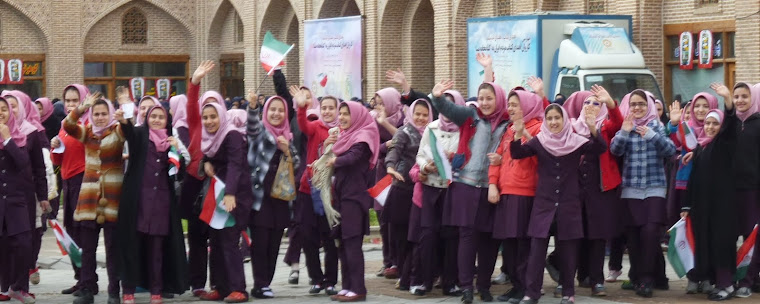 |
| The Shushutar Historical Hydraulic system |
We arrived in Shushtar, about 90km from Ahvaz, in the late afternoon of April 24. The Shushtar Historical Hydraulic System was our final destination of that day. It was designated as the World Heritage Site in 2009 by UNESCO.
When we got off the tour bus in the center of the city, the sun was still in the air, but a cool breeze was blowing from somewhere. Our guide Mr. Musa led us through a crowded street to the very site.
Shushtar was an ancient fortress city on the island in the Karun River. The etymology of Shushtar is “greater Shush (Susa).” During the Sassanid period (224-651) Shushtar was run as the summer capital of the empire. We can imagine that the people would have retreated there to avoid the burning heat in the summer season of this region.
It was already hot in the middle of spring. After five-minute walk, we came down the brick stairs to the water’s edge. We found ourselves standing on the overflow dam that consisted of some water-use facilities. The river formed a huge water basin before us. Water was cascading into it from several holes of the surrounding rock cliff. White splash of water contrasted with the light-brown cliff and the brick architecture attached to it. Many waterfowls were flying over and swimming in the olive-green basin. The wind blew up and carried water spray to us. It was an amazing view.
Mr. Musa spoke loudly against the sound of water, “This Shushtar Historical Hydraulic System originally started as an irrigation system. It seems to date back to Darius the Great in the 5th century B.C., but it is archaeologically proved that the whole system was built in the 3rd century, the Sassanid period.”
The river forms a moat around the city as well as the basin which supplies water through subterranean channels called Ghanats not only to the city but also to its surrounding farms for irrigation.
Mr. Musa led us downstairs to a pit of the dam, which was a water mill chamber. He went down to the bottom of the pit and showed us the stone mill, saying “It is moved by the water running under to produce wheat flour or mortar. That is a part of the system.” The mill seemed not to have been used for a long time. However, the water flowing through the canal from the river and falling into the well by the mill chamber had ever rotated the mill just under the grinding stone!
 |
| The bottom of the pit |
There were several similar pits with a stone mill each, which are today out of date and just a tourist attraction.
We climbed through the stairs to the second floor, where there was an obsolete and rusted hydroelectric generator. In 1973 Mohammad Reza Shah Pahlavi (1919-80), the last emperor in Iran, built it to revitalize the stagnated economy of Shushtar. However, the electricity generated by it only benefited the houses around there.
The Karun River is the biggest river in Iran. In the long history, it must have been the biggest challenge for the people living in the valley to “manage the river”―control floods, supply water to farms, and even harness the power of water. The Shushtar Historical Hydraulic System is the role model that shows us the Iranian wisdom.
 |
| Iranian bakery |
On the way back to the tour bus, we passed by some bakeries making nan, oven-baked flatbread. Mr. Musa bought a few pieces of nan just baked and shared them with us. They were still hot, savory and tasty. In old days the ancestors of the bakers there may have used the wheat flour that had been produced at the water mill in the pit. I felt a fresh breeze from the Karun River again.








